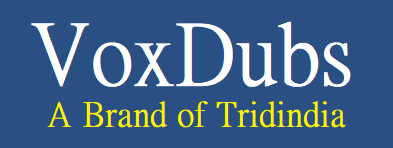When it comes to enjoying foreign films, TV shows, or videos, language barriers can sometimes stand in the way of fully immersing oneself in the content.
To address this issue, two popular methods have emerged: dubbing and subtitling. Each technique has its merits, and the choice between the two can significantly impact how viewers experience foreign-language media.
In this article, we will conduct a comprehensive comparison of dubbing and subtitling, exploring their strengths, weaknesses, and how they contribute to a more enriching multilingual viewing experience.
Understanding Dubbing
Dubbing, also known as voice-over or revoicing, involves replacing the original dialogue of a foreign-language production with a synchronized translation in the viewer’s native language.
Professional voice actors lend their voices to the characters, attempting to match the lip movements and emotions displayed on the screen.
Dubbing is a prevalent practice in many countries, particularly in regions where multilingualism is common, as it allows viewers to fully comprehend the content without relying on subtitles.
Pros of Dubbing
1. Seamless Viewing Experience
With dubbing, viewers can focus solely on the visual elements of the film or show, without the need to divert their attention to reading subtitles. This seamless integration enhances the overall viewing experience, making it easier to follow the story and emotions portrayed by the characters.
2. Accessibility for All Audiences
Dubbing broadens the accessibility of foreign content to a wider audience, including children and those with reading difficulties. This inclusivity fosters cultural exchange and understanding on a global scale.
3. Preserving Original Audio and Sound Effects
Effective Dubbing retains the original audio background, sound effects, and musical score, preserving the intended atmosphere and emotional impact that may be lost in subtitled versions.
Cons of Dubbing
1. Loss of Original Performances
Translating dialogue and emotions while maintaining lip synchronization is challenging. As a result, some of the original performances and nuances of the actors may be lost in the dubbing process, leading to a potential disconnect between the characters and their voices.
2. Cultural Adaptations
Dubbing often requires cultural adaptations to make the content more relatable to the target audience, which may lead to changes in jokes, references, or idiomatic expressions, potentially altering the original artistic vision.
3. Limited Voice Talent
Finding skilled voice actors who can effectively convey the characters’ emotions, voices, and personalities is crucial to a successful dubbing, but not every language has a large pool of experienced voice talent.
Unraveling Subtitling
Subtitling involves displaying a translated version of the original dialogue at the bottom of the screen while the original audio remains intact.
This method allows viewers to hear the characters’ original voices while reading translated text simultaneously.
Subtitling is widely used and appreciated, especially in countries where dubbing is less common or considered intrusive to the viewing experience.
Pros of Subtitling
1. Preserving Original Performances
Right Subtitling retains the authenticity of the original performances, capturing the nuances, emotions, and vocal inflections of the actors, thus allowing viewers to experience the intended depth of the content.
2. Cultural Immersion
By retaining the original language, subtitling provides an opportunity for viewers to immerse themselves in different cultures, learning new languages and gaining insights into linguistic and cultural nuances.
3. Greater Artistic Integrity
Subtitling is considered to maintain the artistic integrity of the original production, as it presents the content as the filmmakers intended, without the need for cultural adaptations or changes.
Cons of Subtitling
1. Reading Fatigue
Watching subtitled content demands constant reading, which can be tiring for some viewers, detracting from the visual experience and potentially causing them to miss essential on-screen details.
2. Language Barrier
Subtitles may not be suitable for younger audiences or those with limited reading skills, as they may struggle to keep up with the text while also comprehending the visuals.
3. Translation Limitations
Subtitles have limited space and time to convey translated dialogue accurately, which can result in simplified or condensed translations that might not fully capture the original meaning or cultural context.
The Impact on Multilingual Viewing Experience
The choice between dubbing and subtitling significantly influences how viewers experience foreign-language media.
Dubbing offers a smooth and accessible experience, particularly for those who prefer to focus on visuals rather than reading.
It caters well to a broader audience, including young viewers and those who have difficulty reading subtitles.
On the other hand, subtitling preserves the original performances and maintains the artistic integrity of the content, allowing viewers to engage with the original language and culture.
It can be a preferred method for language enthusiasts, language learners, or those who enjoy a more authentic experience.
However, there is no one-size-fits-all approach, and the best option depends on individual preferences and viewing context.
Some may prefer dubbing for light-hearted content or entertainment purposes, while others may lean toward subtitling for artistic films or documentaries where preserving the original performances and language nuances is paramount.
In conclusion, both dubbing and subtitling have their merits and challenges.
Understanding the strengths and weaknesses of each method can lead to a more informed decision when choosing the best option for a multilingual viewing experience.
As global content consumption continues to grow, the availability and quality of both dubbing and subtitling will continue to play a significant role in facilitating cross-cultural understanding and appreciation for foreign-language media.
For more information contact VoxDubs at +91-8527599201 or grab an instant quote.
